![Voice of Customer Analytics: How to Do It [+ Best Tools] cover](https://blog-static.userpilot.com/blog/wp-content/uploads/2023/11/voice-of-customer-analytics-how-to-do-it_d9f576dc50a68e5a69746f5cff24223d_2000.png)
Most SaaS companies understand the value of user feedback, but few actually have a system in place to collect feedback and customer data. Other businesses spend a small fortune on focus groups only to end up with zero actionable feedback and insufficient analytics to make data-driven decisions.
In this guide, we’ll show you why voice of customer analytics is the most effective way to analyze customer feedback, how to collect customer feedback data, and which tools you should be using for the data collection process!
Try Userpilot Now
See Why 1,000+ Teams Choose Userpilot

What is voice of customer analytics?
Voice of customer analytics (or VoC analytics) is a process that helps you understand the motivations, problems, needs, and challenges that your customers face while trying to accomplish their job-to-be-done (JTBD).
Tracking this type of customer data will help you identify areas for improvement and refine your product.
What is the primary goal of implementing voice of customer analytics?
Which method is most effective for capturing immediate feedback after a specific interaction?
What is the critical final step after collecting and analyzing VoC data?
Turn customer voices into product victories with Userpilot.
Collect, analyze, and act on user feedback in real-time without writing code.
Why is voice of customer analytics important?
While the broader reasons for collecting customer data still apply, there are a few benefits that are unique to voice of customer analytics:
- Understanding the customer experience. Voice of customer data analysis will give you a deeper understanding of the needs and preferences across your entire user base. This will help you make decisions (whether in product development or marketing) that will better resonate with customers.
- Data-driven product development. Collecting qualitative feedback on the customer experience and seeing how different changes impact customer satisfaction (either positively or negatively) will help you learn from development mistakes or double down on popular features.
- Higher growth and retention rates. Having a voice of customer analytics program can help you increase customer retention and boost growth initiatives. They will also make your customer strategy more specific to what your users actually want out of the product.
- Streamlined tool stack. A voice of customer program will help you identify the customer tools that you truly need. This saves you from spending thousands of dollars on tools that don’t have a significant impact on customer experiences.
If you want to improve customer retention, drive product growth, and create a better product, then read the section below to learn how to collect voice of customer data.
How to collect voice of customer data?
Depending on the purpose why you’re collecting voice of customer insights, you’ll need to choose different (or combine multiple) feedback collection methods. The most common methods that you can utilize to collect VoC data are:
- In-app surveys
- Direct interviews
- Social listening
- Online reviews
- Feedback emails
Let’s take a closer look at each one!
Collect customer feedback using in-app surveys
Most in-app surveys fall into one of two categories:
- Relational. Relational surveys encompass the entire customer relationship and are usually sent on a fixed schedule. One example would be an NPS survey that’s sent out to users quarterly to conduct sentiment analysis throughout the year.
- Transactional. Transactional surveys are based on a single interaction. An example could be sending users a CSAT survey after they complete the onboarding process to see how satisfied they were with the experience.
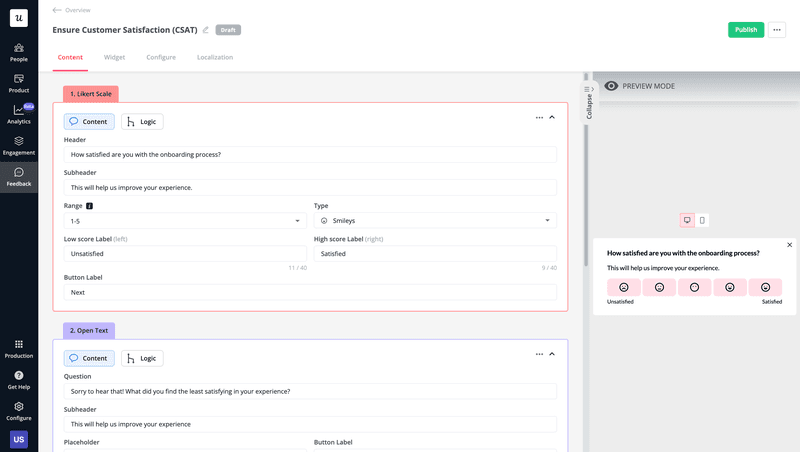
Conduct direct interviews for customer opinions
Customer interviews can be conducted across a wide variety of channels. These include phone calls, video conferencing, or even feedback forms. There are pros and cons to each approach since a Zoom meeting will yield deeper insights than a dedicated feedback form but comes at the cost of scalability.
Use social listening tools for customer sentiment
Social listening tools can help you conduct automated sentiment analysis on channels that might otherwise fly under the radar of your marketing team. These tools help you identify customer mentions of your product or brand with both positive and negative valence.
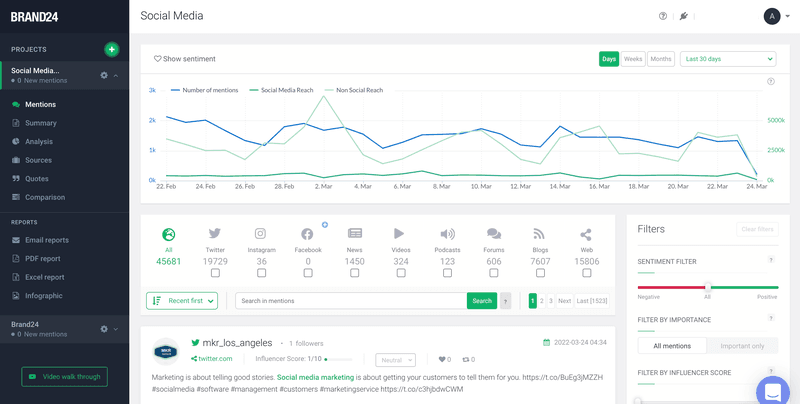
Monitor review platforms for online customer reviews
Platforms like G2, Capterra, and Product Hunt help you monitor the online discussion about your product. They’re also a great place to evaluate how well you’re meeting customer needs (while bearing in mind that a loud minority may skew things toward the negative at times).
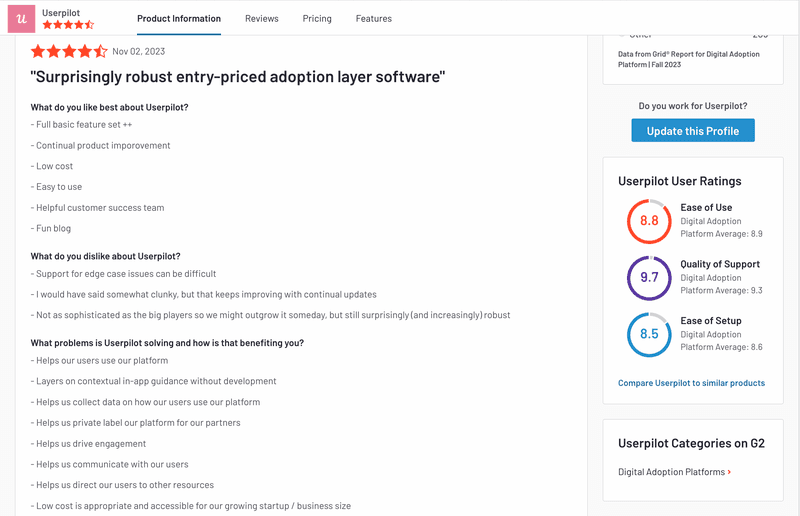
Still, reviewing reviews (say that 10 times fast) is a highly effective way of generating actionable insights and debunking inaccurate beliefs that you may hold. There are plenty of SaaS companies that think they offer exceptional customer service, only to find out that online reviews tell a different story.
Send emails to collect customer experience feedback
If it’s not possible to gather in-app feedback, then sending out surveys through email is the next best thing. Email surveys tend to get lower response rates and longer waiting times, but they’re definitely better than not sending out online customer surveys at all.
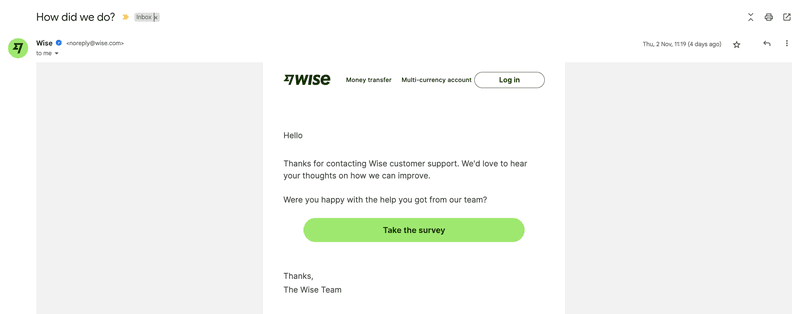
Email surveys can be especially useful if you need to collect customer feedback on products that users only log into a few times a month or year. If your customers tend to log in multiple times per day or week, then you’d likely get better customer feedback through in-app surveys.
Track customer behavior across the customer journey
Analyzing data can help you identify trends and get a complete picture from otherwise unstructured data. Use event tracking to collect behavioral data on what customers do, how often they do it, which patterns they adhere to, and whether or not there are any sudden changes.
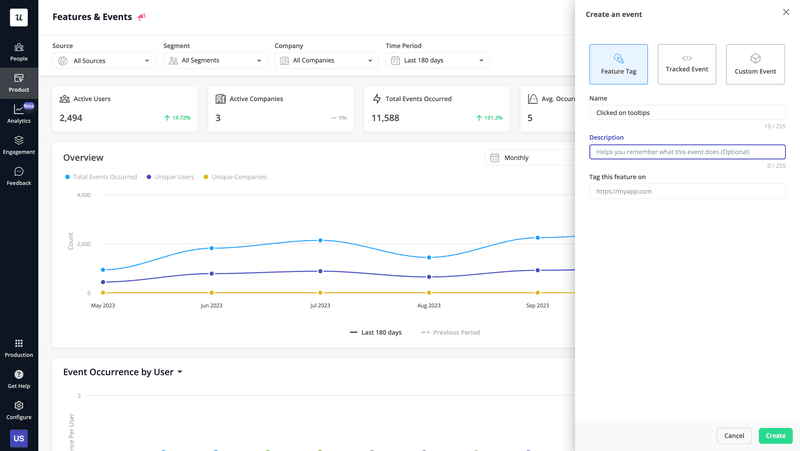
This gives you more raw data to work with and a more holistic view of the customer journey.
Collect customer support data
Gathering feedback from users right after customer service interactions can be an incredibly valuable form of customer research. After all, this is the point in their journey when their customer pain points have been agitated to the point of needing to reach out to a representative.
In addition to offering support and tracking quantitative data on the effectiveness of your agents, providing self-service support through chatbots and knowledge bases can also help with increasing customer satisfaction.
How to perform voice of customer analysis?
There’s no question that VoC analytics provide valuable insights. However, pulling off a successful voice of the customer analysis round takes the right strategy and execution. The sections below will show you how to gain insights into common issues, customer expectations, and more.
Categorize customer feedback to identify common issues
Like with most analytics tools, the first step of feedback analysis should be to go into your customer analytics tool and start categorizing responses. Userpilot lets you tag NPS responses to easily track the problems that your promoters, passives, and detractors run into.
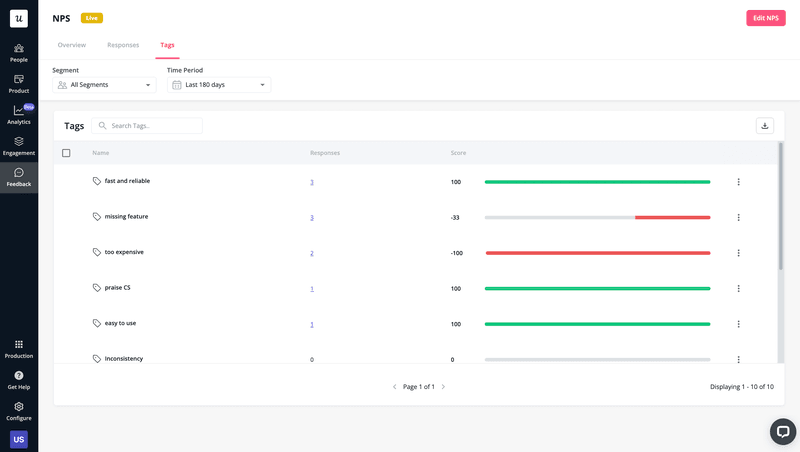
Collect further feedback to understand customer expectations
If you don’t have enough data to make an informed decision, then collecting further feedback through follow-up questions can help you verify your hypotheses and avoid survey bias. Other than adding follow-up survey questions, you can also try to contact customers through other channels.
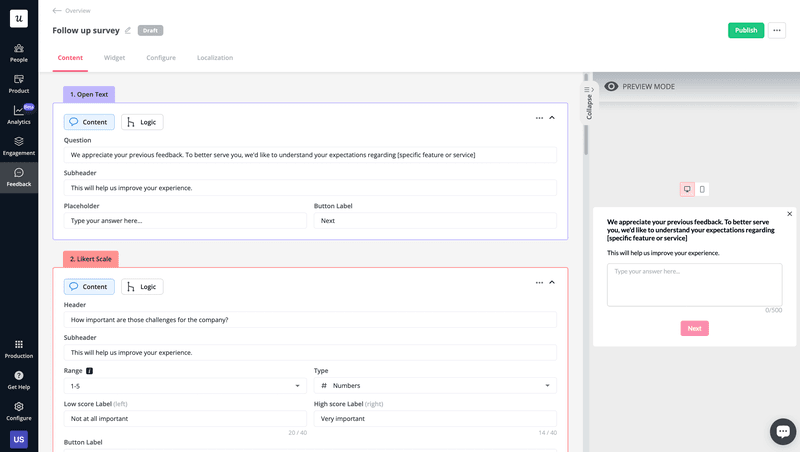
For instance, sending an email to users with particularly noteworthy NPS responses or requesting an interview with them will help you get clarification on the feedback that they submitted. This will also give you the chance to ask open-ended questions that will allow them to expand on their initial answer.
Pair survey data with customer behavior data for actionable insights
Combining your customer analytics programs with behavioral data can come together to offer more actionable insights. For example, if most customers aren’t satisfied with their onboarding journey, then you can conduct funnel analysis.
This will help you identify friction points that cause customer drop-off.
Eliminating friction can have different outcomes based on which stage of the user journey you optimize:
- Primary onboarding. Removing friction during the primary onboarding stage will help people have their first Aha! moment sooner and reach the customer activation point. This will reduce the time-to-value (TTV) and increase free trial conversion rates.
- Secondary onboarding. Reducing friction during secondary onboarding can improve feature discovery and increase retention rates. This is especially true for advanced features that customers may never end up using if the core product experience is too much of a hassle.
- Tertiary onboarding. Because tertiary onboarding is all about turning customers into advocates, minimizing friction carries major business benefits. These include word-of-mouth marketing and account expansion.
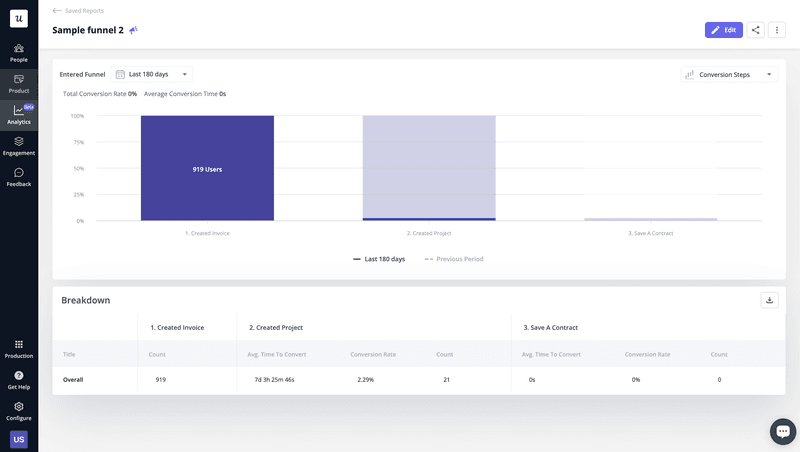
How to act on customer insights to improve customer satisfaction?
Tracking key performance indicators (KPIs) like Net Promoter Score is helpful, but these insights are only valuable if they help you improve customer satisfaction and retain customers longer. The strategies below will help you act on your customer insights.
Follow up with customer feedback using in-app communication
In-app communication is a good way to leverage real-time customer feedback to make customers feel like you’re actually listening to them. One example would be segmenting customers who have trouble using your product with third-party integrations.
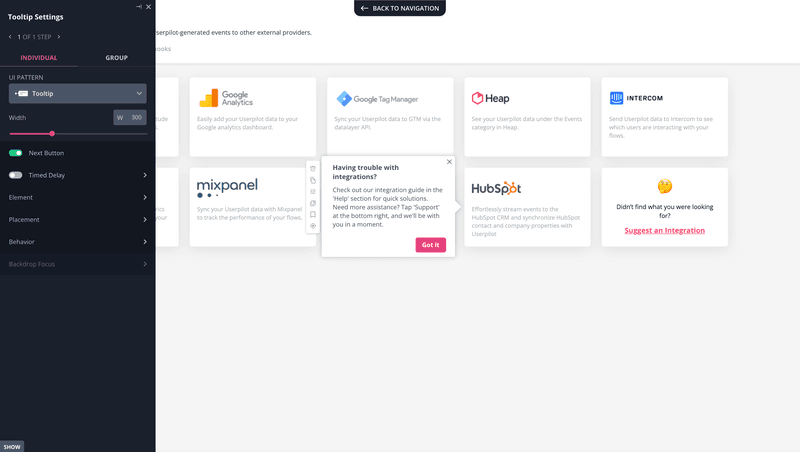
By creating a user segment for customers who share this problem, you’ll be able to target them with in-app guidance that helps with the exact issue they’re facing. This makes customers perceive the support experience as one that’s proactive and adaptive.
Provide contextual help to build customer loyalty
Providing a personalized customer service experience will leave you with happier users and longer retention periods. For instance, you could trigger contextual help popups for customers with a low NPS score and have mentioned struggling with a specific feature in past survey responses.
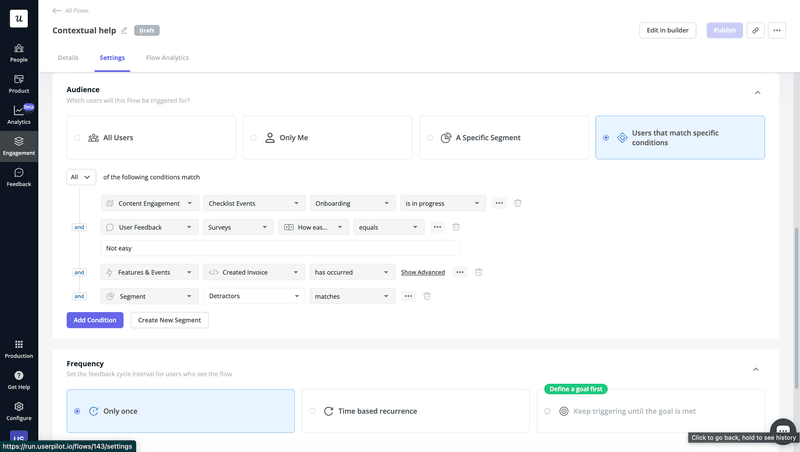
Refine help resources to provide enhanced support
Customer feedback surveys can help you identify recurring issues and then create support resources to proactively address those problems. Using feedback data to expand and refine your in-app resource center will make it possible to cover most (or all) potential issues before they turn into support tickets.
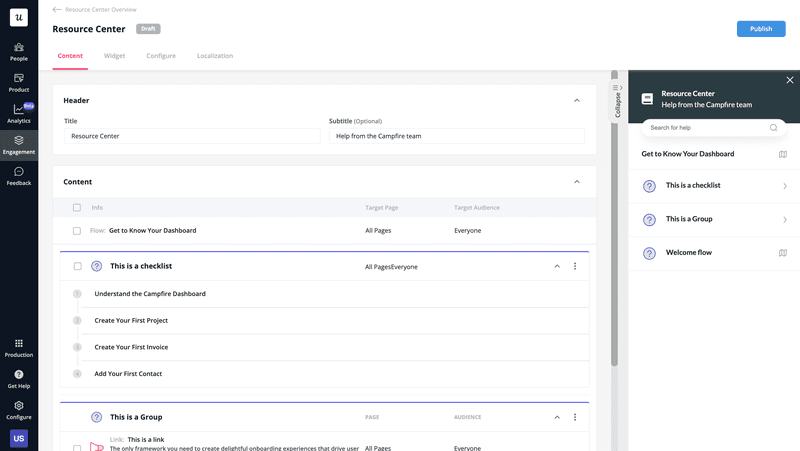
Implement customer feedback for product enhancements
A voice of the customer program can provide feedback on specific features or suggestions for potential product improvements. Whenever you implement changes based on user feedback, triggering a follow-up message notifying customers of the feature update can create a beneficial feedback loop.
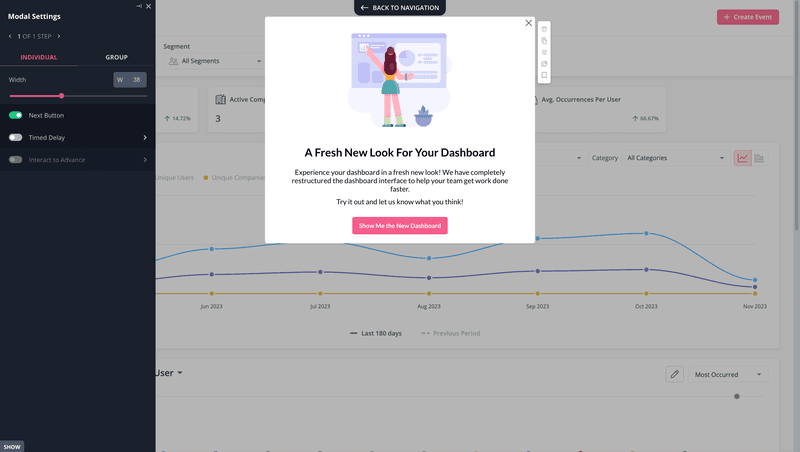
Best tools for voice of customer analytics program
Now that you understand the value of voice of customer analysis and have an actionable list of data collection methods, it’s time to look at a few VoC analytics tools. Specifically, we’ll go over Userpilot, Hotjar, and Brand24 to help you find the right solution for your needs.
Userpilot
Userpilot is a digital adoption platform (DAP) with native VoC analytics capabilities.
Here’s an overview of Userpilot’s voice of customer features:
- In-app surveys. Userpilot’s in-app survey builder lets you collect both quantitative and qualitative from your users from within the product itself. There are 14 templates to choose from (for various use cases), which can save you time when creating multiple surveys.
- NPS surveys. Building no-code NPS surveys (and setting them on a recurring schedule) is super easy with Userpilot. You’ll be able to target specific segments, tag responses, and use the dedicated NPS dashboard to view all your data in one place.
- Behavioral tracking. Userpilot lets you gather behavioral event data through no-code (or low-code) event tracking. This gives you an inside look into your user behavior as they use your product in real time.
In addition to the data collection methods outlined above, Userpilot also has advanced analytics reporting. You’ll be able to conduct path analysis, create funnel/trend reports, and see retention tables for different cohorts.
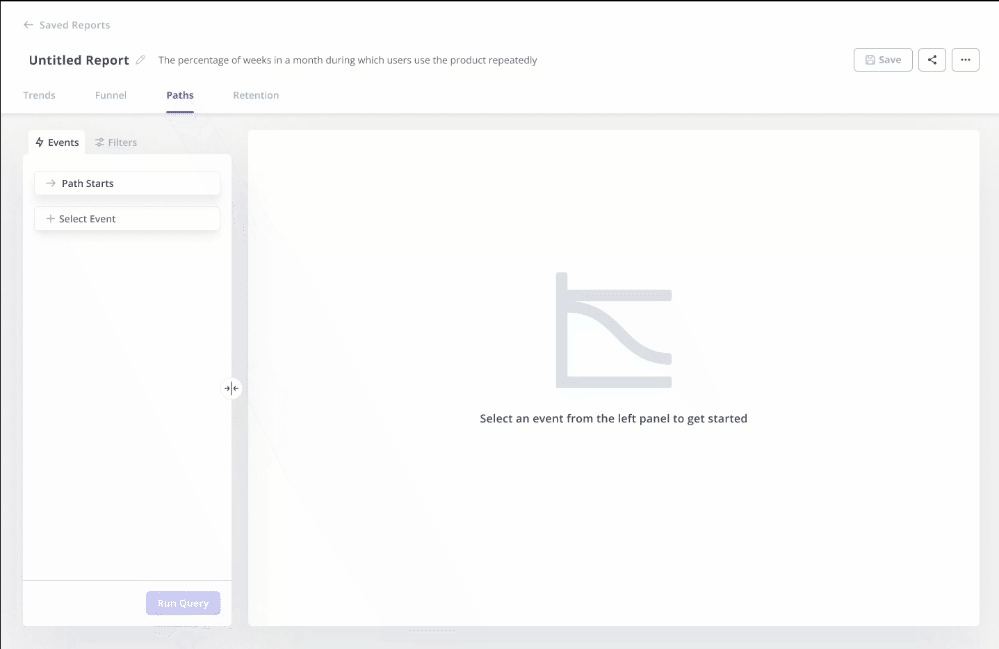
Combining Userpilot’s analytics reports with data from voice of customer surveys will give you the most actionable set of insights to work with. You can also use the data to collect to segment customers within Userpilot and then target them with personalized experiences based on the issues they’re facing.
Userpilot pricing starts at $299/month (billed annually) for up to 2,000 MAUs. It includes in-app user engagement features, segmentation, trend analysis, NPS surveys, and essential product analytics. This plan is ideal for small and mid-market SaaS teams getting started.
Click here to get your free Userpilot demo today!
Hotjar
Hotjar is a heatmap and product experience insights platform. It has tools for session recording, customer surveys, and even interviews. The only downsides of Hotjar are its impact on website speed and pricing model (that can get expensive quickly), so explore alternatives like Smartlook or Mouseflow.
Pricing starts at $39/month and offers a 15-day free trial.
Note: Hotjar also has a Basic plan that’s free but limited to 35 sessions per day.
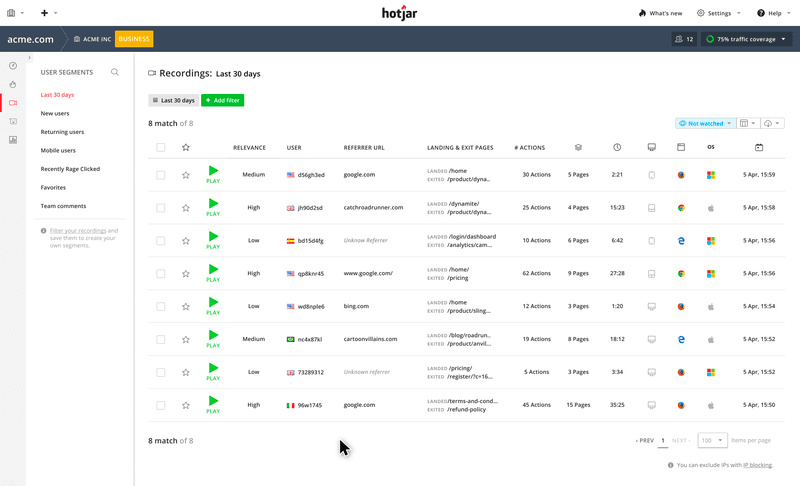
Brand24
Brand24 can be used to collect VoC data on social media platforms. Brand24 lets you track real-time insights from 25 million different sources. You’ll also be able to conduct sentiment analysis to see if the mentions were positive, neutral, or negative.
Pricing starts at $99/month and offers a 14-day free trial.
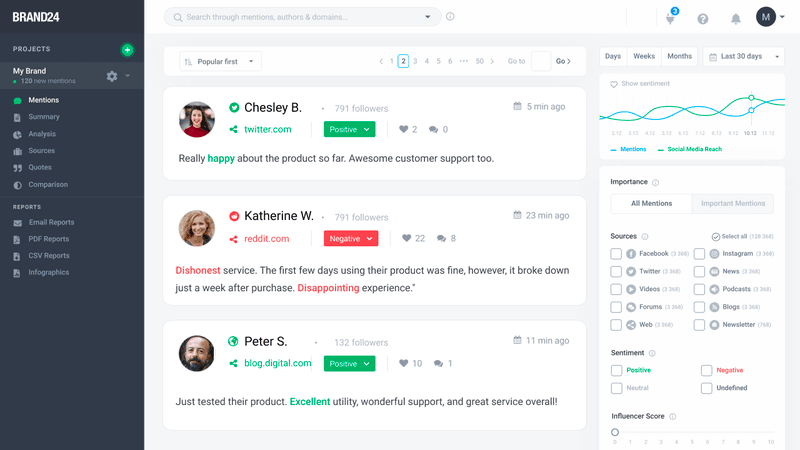
Conclusion
As you can see, listening to the voice of the customer will help you gain insights and act on valuable data that can aid customer retention — not to mention inform product development. If you’re ready to start gathering insights from users, then it’s time to get your free Userpilot demo today!






